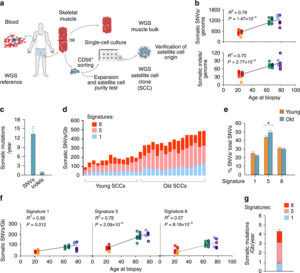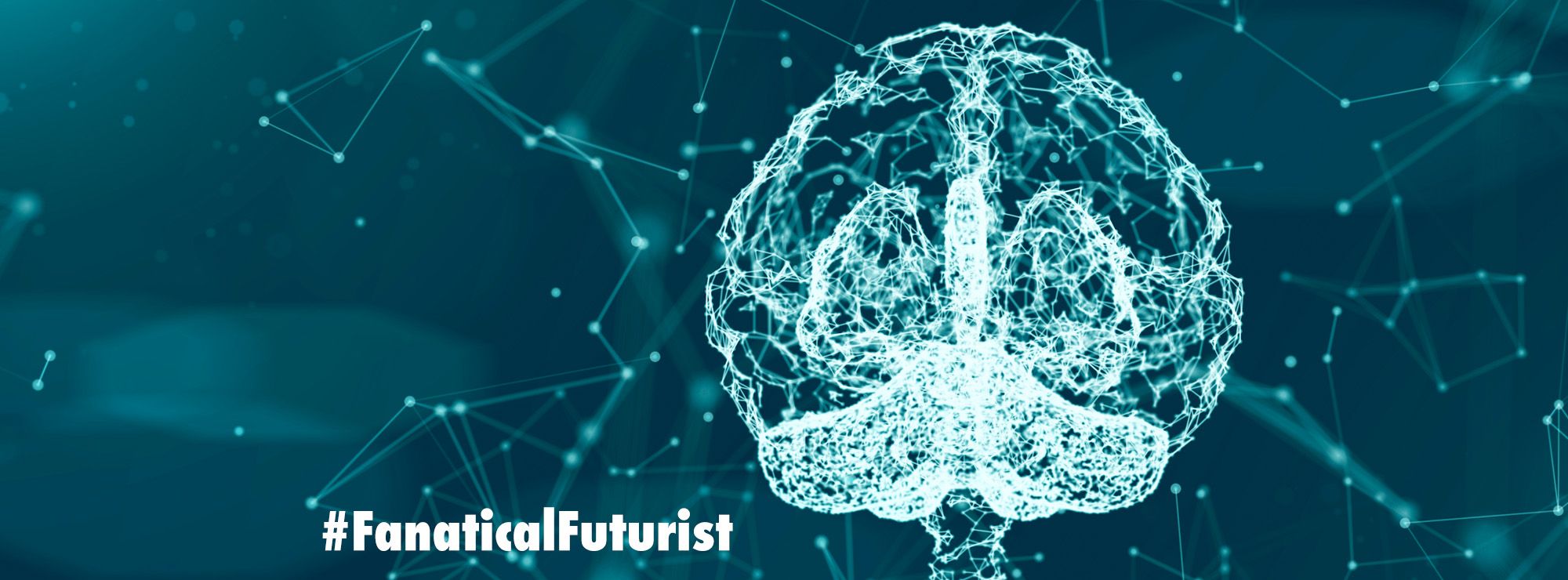Page 9729
Jun 9, 2018
Human Skeletal Muscle Aging and Mutagenesis
Posted by Nicholi Avery in categories: aging, DNA, genetics, health, life extension
Study based upon human skeletal muscle aging, mutagenesis, and the role of #satellite cells.
“A more comprehensive understanding of the interplay of stem cell–intrinsic and extrinsic factors will set the stage for improving cell therapies capable of restoring tissue homeostasis and enhancing muscle repair in the aged.”
Human aging has multiple effects on the human body. One of the effects of human aging is the reduction in skeletal muscle (SkM) function and a reduction in the number and activity of satellite cells (SCs), the resident stem cells. The whole genome of single SC clones of the leg muscle vastus lateralis from healthy individuals of different ages (21–78 years) was analyzed, to study the specific connection between SC aging and muscle impairment. In healthy adult muscle rapid increase of SCs is consistent with the accumulation rate of 13 somatic mutations per genome per year. Mutations typically do not happen in SkM-expressed genes because they are protected. However, as mutations in exons and promoters increase, genes involved in SC activity and muscle function are targeted which results in aging. Exons are coding sections of an RNA transcript, or the DNA encoding it, that are translated into protein. Proteins are the synthesis of molecules. A change in of a single base pair that caused the substitution of a different amino acid in the resulting protein (missense mutation) that was propagated to the muscle and detected in association with SC mutations affecting the whole tissue. #Somatic mutagenesis in SCs as a result is the driving force in the age related decline of SkM function.
Continue reading “Human Skeletal Muscle Aging and Mutagenesis” »
Tags: aging, biology, dna, Muscles, Mutagenesis, Myofiber, Physiological, RNA, Satellite Cells, Skeletal, Soma
Jun 9, 2018
NASA Publishes SpaceX’s Proposal for a Futuristic Kennedy Space Center
Posted by Genevieve Klien in categories: Elon Musk, space travel, sustainability
The Kennedy Space Center might be getting a major upgrade and expansion soon if Elon Musk gets his way. NASA published a plan submitted by SpaceX that dramatically reimagines the company’s presence at KSC in Cape Canaveral, Florida. The plans include everything from a control tower that resembles a flying saucer to a “rocket garden,” showcasing futuristic designs that will expand the space company’s footprint and potential influence within the US agency.
NASA published a draft environmental review for the proposed SpaceX Operations Area, as first reported by Florida Today on Friday. According to the document, SpaceX is seeking permission to build on a 67-acre patch of land about one mile north of KSC’s visitor center complex.
SpaceX wants to build a 133,000-square-foot Falcon hangar to process the used boosters and other rocket materials that it recovers. The hangar would facilitate more efficient recycling of the materials which could potentially save the company billions of dollars per launch.
Continue reading “NASA Publishes SpaceX’s Proposal for a Futuristic Kennedy Space Center” »
Jun 9, 2018
AI-based method could speed development of specialized nanoparticles
Posted by Alexander Rodionov in categories: biotech/medical, nanotechnology, robotics/AI
A new technique developed by MIT physicists could someday provide a way to custom-design multilayered nanoparticles with desired properties, potentially for use in displays, cloaking systems, or biomedical devices. It may also help physicists tackle a variety of thorny research problems, in ways that could in some cases be orders of magnitude faster than existing methods.
The innovation uses computational neural networks, a form of artificial intelligence, to “learn” how a nanoparticle’s structure affects its behavior, in this case the way it scatters different colors of light, based on thousands of training examples. Then, having learned the relationship, the program can essentially be run backward to design a particle with a desired set of light-scattering properties—a process called inverse design.
The findings are being reported in the journal Science Advances, in a paper by MIT senior John Peurifoy, research affiliate Yichen Shen, graduate student Li Jing, professor of physics Marin Soljacic, and five others.
Continue reading “AI-based method could speed development of specialized nanoparticles” »
Jun 9, 2018
The Rich Are Planning to Leave This Wretched Planet
Posted by Genevieve Klien in categories: internet, space travel
Here comes private space travel — with cocktails, retro-futuristic Philippe Starck designs and Wi-Fi. Just $55 million a trip!
Jun 9, 2018
General AI, the “holy grail” of AI, demonstrated for the first time
Posted by Genevieve Klien in categories: information science, robotics/AI
Recently we saw a new “Master algorithm” that could be used to create the first generation of super intelligent machines, and now a team of researchers from Maryland, USA, announced this week that they’ve invented a general Artificial Intelligence (AI) way for machines to identify and process 3D images that doesn’t require humans to go through the tedium of inputting specific information that accounts for each and every instance, scenario, difference, change and category that could crop up, and they claim it’s a world first, even though it follows on from a not too dissimilar breakthrough from Google DeepMind whose own platform, Alpha Zero, recently taught itself a mix of board games including chess to a grand master level, in just four hours.
Jun 9, 2018
David Roden on Posthuman Life
Posted by Steve Nichols in categories: alien life, futurism
https://paper.li/e-1437691924#/
When Stapledon wrote that book he was thinking of Martians, but in our time one might think he was studying the strangeness of what our posthuman progeny may evolve into. In Last and First Men Stapledon presents a version of the future history of our species, reviewed by one of our descendants as stellar catastrophe is bringing our solar system to an end. Humanity rises and falls through a succession of mental and physical transformations, regenerating after natural and artificial disasters and emerging in the end into a polymorphous group intelligence, a telepathically linked community of ten million minds spanning the orbits of the outer planets and breaking the bounds of individual consciousness, yet still incapable of more than “a fledgling’s knowledge” of the whole.

I remember about maybe 4’ish years ago someone was working on a sitdown bike looking thing, where if you pedaled it for 30 minutes you could generate enough power to power an average american home for a day. Does anyone know what ever happened with that?

















